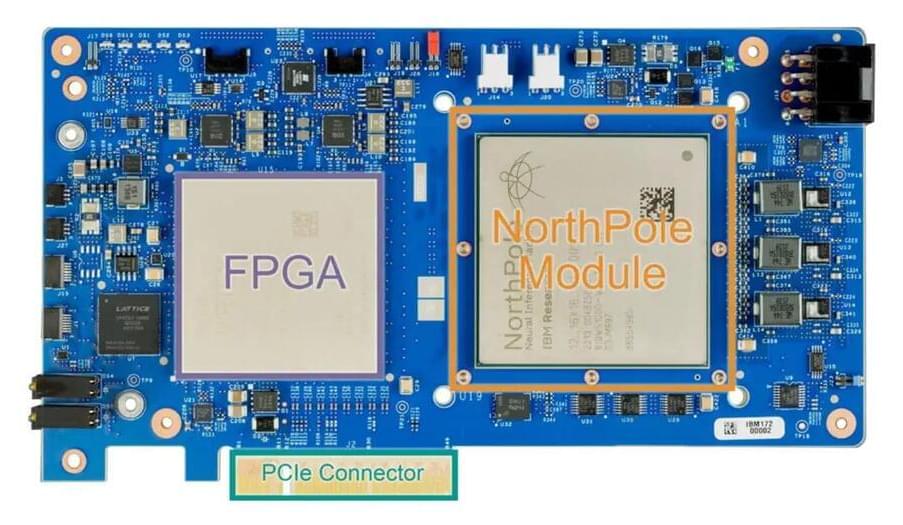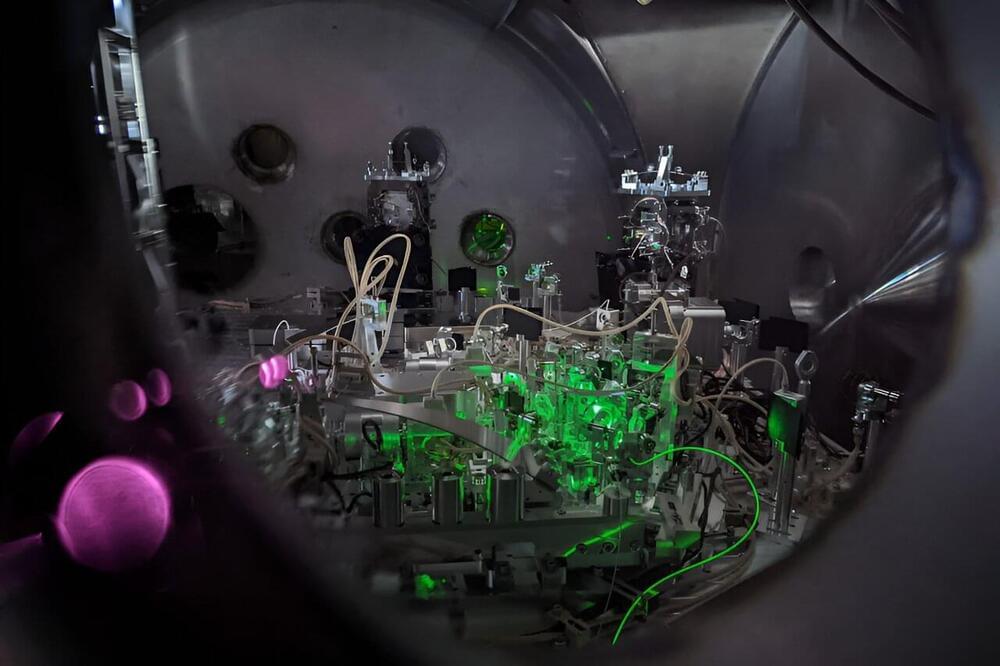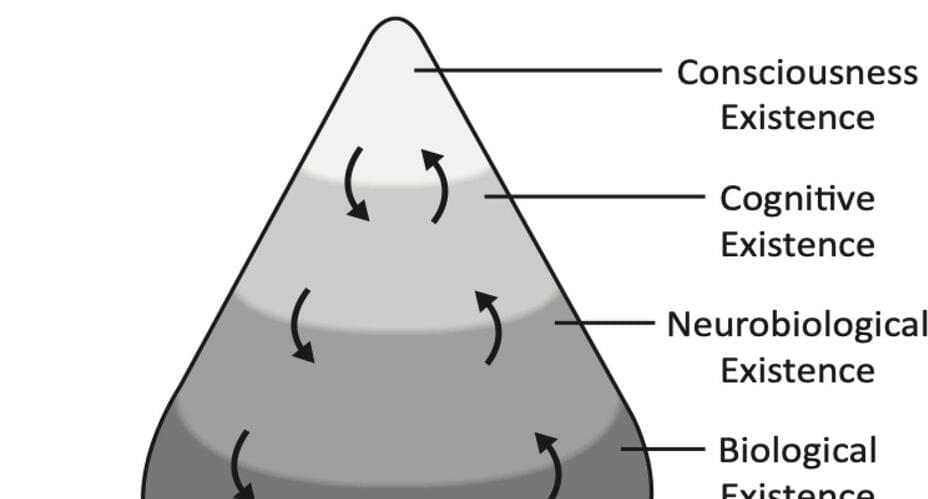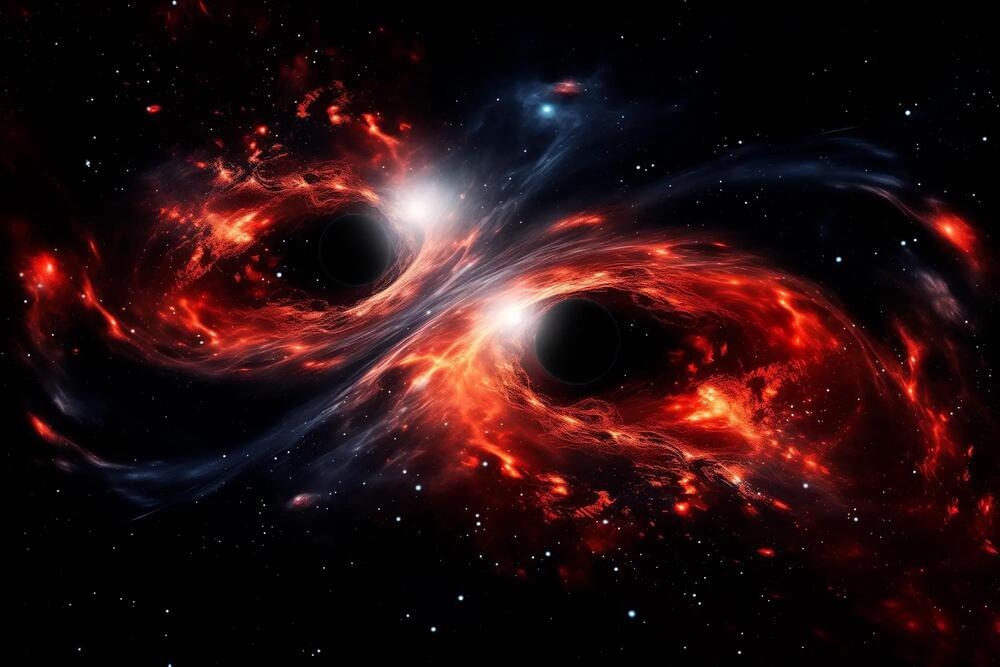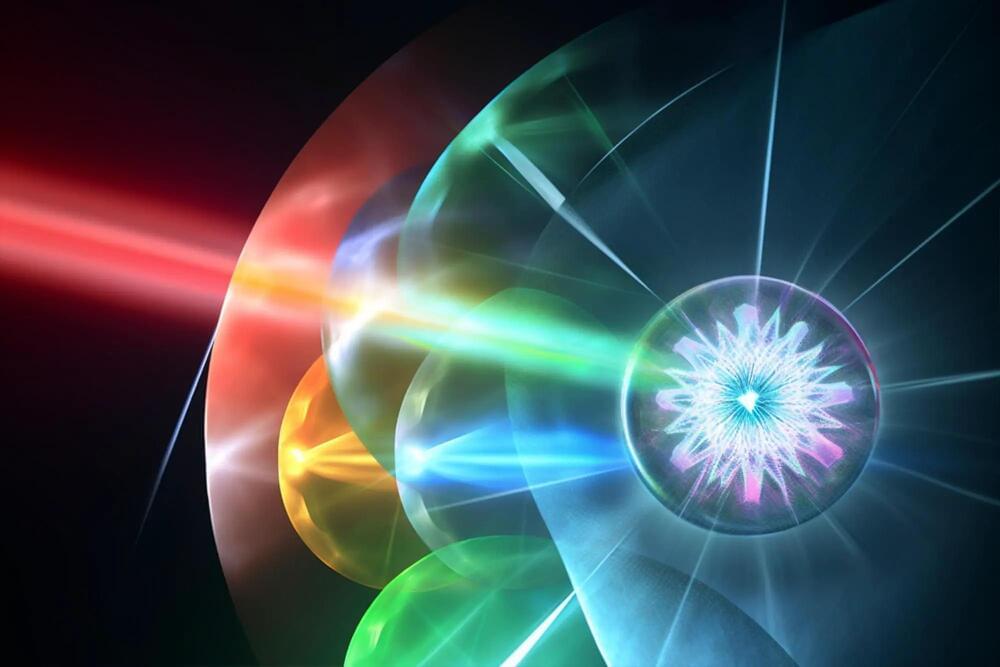Page 1083
Its energy efficiency is just mind-blowing,” said Damien Querlioz, a nanoelectronics researcher at the University of Paris-Saclay in Palaiseau. “I feel the paper will shake the common thinking in computer architecture.
NorthPole, a new edge-based processor announced this month by IBM Research, is up to 22 times faster and much more energy efficient than chips currently on the market.
A team from IBM research has presented NorthPole – a brain-inspired chip architecture, which blends computation with memory to process data more efficiently at low energy costs.
Oct 24, 2023
LIGO surpasses the quantum limit
Posted by Paul Battista in categories: cosmology, quantum physics
In 2015, the Laser Interferometer Gravitational-Wave Observatory (LIGO), made history when it made the first direct detection of gravitational waves—ripples in space and time—produced by a pair of colliding black holes.
Since then, LIGO and its sister detector in Europe, Virgo, have detected gravitational waves from dozens of mergers between black holes as well as from collisions between a related class of stellar remnants called neutron stars. At the heart of LIGO’s success is its ability to measure the stretching and squeezing of the fabric of space-time on scales 10 thousand trillion times smaller than a human hair.
As incomprehensibly small as these measurements are, LIGO’s precision has continued to be limited by the laws of quantum physics. At very tiny, subatomic scales, empty space is filled with a faint crackling of quantum noise, which interferes with LIGO’s measurements and restricts how sensitive the observatory can be.
Oct 24, 2023
Spectacular Vision: Physicists Boost Microscopes Beyond Diffraction Limits
Posted by Paul Battista in category: biotech/medical
New technique could be used in medical diagnostics and advanced manufacturing.
Ever since Antonie van Leeuwenhoek discovered the world of bacteria through a microscope in the late seventeenth century, humans have tried to look deeper into the world of the infinitesimally small.
There are, however, physical limits to how closely we can examine an object using traditional optical methods. This is known as the ‘diffraction limit’ and is determined by the fact that light manifests as a wave. It means a focused image can never be smaller than half the wavelength of light used to observe an object.
Oct 24, 2023
Testing A Time-Jumping, Multiverse-Killing, Consciousness-Spawning Theory Of Reality
Posted by Genevieve Klien in categories: cosmology, neuroscience, particle physics, quantum physics
When scientists measure a particle, it seems to collapse to one fixed state. Yet no one can be sure what’s causing collapse, also called reduction of the state. Some scientists and philosophers even think that wave function collapse is an elaborate illusion. This debate is called the measurement problem in quantum mechanics.
The measurement problem has led many physicists and philosophers to believe that a conscious observer is somehow acting on quantum particles. One proposal is that a conscious observer causes collapse. Another theory is that a conscious observer causes the universe to split apart, spiralling out alternate realities. These worlds would be parallel yet inaccessible to us so that we only ever see things in one single state in whatever possible world we’re stuck in. This is the Multiverse or Many Worlds theory. “The point of view that it is consciousness that reduces the state is really an absurdity,” says Penrose, adding that a belief in Many Worlds is a phase that every physicist, including himself, eventually outgrows. “I shouldn’t be so blunt because very distinguished people seem to have taken that view.” Penrose demurs. He politely but unequivocally waves off the idea that a conscious observer collapses wave functions by looking at them. Likewise, he dismisses the view that a conscious observer spins off near infinite universes with a glance. “That’s making consciousness do the job of collapsing the wave function without having a theory of consciousness,” says Penrose. “I’m turning it around and I’m saying whatever consciousness is, for quite different reasons, I think it does depend on the collapse of the wave function. On that physical process.”
What’s causing collapse? “It’s an objective phenomenon,” insists Penrose. He’s convinced this objective phenomenon has to be the fundamental force: gravity. Gravity is a central player in all of classical physics conspicuously missing from quantum mechanics.
Oct 24, 2023
Chicago region designated US Tech Hub for quantum technologies by Biden-Harris administration
Posted by Paul Battista in categories: economics, government, quantum physics
The Chicago region has been named an official US Regional and Innovation Technology Hub for quantum technologies by the Biden-Harris administration, a designation that opens the door to new federal funding and recognizes the growing strength of an ecosystem poised to become the heart of the nation’s quantum economy. The Bloch Tech Hub (pronounced “block”), a coalition of industry, academic, government, and nonprofit stakeholders led by the Chicago Quantum Exchange, was one of 31 designees from nearly 400 applications across the country.
The selection, announced Monday morning by the White House and the US Department of Commerce’s Economic Development Administration (EDA), is the first phase of a federal initiative designed to “supercharge” innovation economies that have the potential to become global leaders in a critical technology within a decade. As a recipient of the US Tech Hubs designation, The Bloch is now eligible to apply for the program’s second phase, which could include millions of dollars in funding to implement the hub’s activities. It was one of two US Tech Hubs designated in Illinois, the other focused on biomanufacturing.
“Home to world-class institutions and first-rate research centers, Illinois is transforming technology, biomanufacturing, and innovation at every turn,” said Illinois Governor JB Pritzker. “I couldn’t be prouder that the Biden Administration has selected the Chicago Quantum Exchange’s The Bloch and the University of Illinois at Urbana-Champaign’s iFAB Hub as two of just 31 inaugural tech hubs — opening the door for even more investment, advancement, and discovery. There’s no doubt that the rest of the nation have caught on to our great state’s status as an innovation powerhouse — and our future couldn’t be brighter.”
Oct 24, 2023
Black Holes in “Perfect Pairs” Balance Gravity and Cosmic Expansion
Posted by Paul Battista in category: cosmology
Scientists theorize balanced black hole.
A black hole is a place in space where the gravitational field is so strong that not even light can escape it. Astronomers classify black holes into three categories by size: miniature, stellar, and supermassive black holes. Miniature black holes could have a mass smaller than our Sun and supermassive black holes could have a mass equivalent to billions of our Sun.
Oct 24, 2023
Virtual Reality Generates Cold Sensations Without Real Temperature Shifts
Posted by Paul Battista in categories: innovation, virtual reality
Summary: Researchers have created a groundbreaking non-contact technology to simulate cold sensations in virtual reality, maintaining consistent skin temperatures.
By combining cold airflow and light, they induce cold sensations without actual temperature shifts. This breakthrough provides a novel approach to simulating persistent thermal experiences in VR environments, enhancing the user’s immersion.
The technology holds the promise of revolutionizing VR experiences by providing instantaneous and sustained thermal sensations.
Oct 24, 2023
Nature’s Nanotechnology: The Wonders of Ancient Roman Glass
Posted by Paul Battista in category: nanotechnology
Approximately 2,000 years ago in ancient Rome, glass containers filled with wine, water, or possibly exotic perfumes, fell off a marketplace table, breaking into countless pieces on the ground. Over the ensuing centuries, these shards became buried under layers of dirt and debris and exposed to a continuous cycle of changes in temperature, moisture, and surrounding minerals.
Now these tiny pieces of glass are being uncovered from construction sites and archaeological digs and reveal themselves to be something extraordinary. On their surface is a mosaic of iridescent colors of blue, green, and orange, with some displaying shimmering gold-colored mirrors.
These beautiful glass artifacts are often set in jewelry as pendants or earrings, while larger, more complete objects are displayed in museums.

